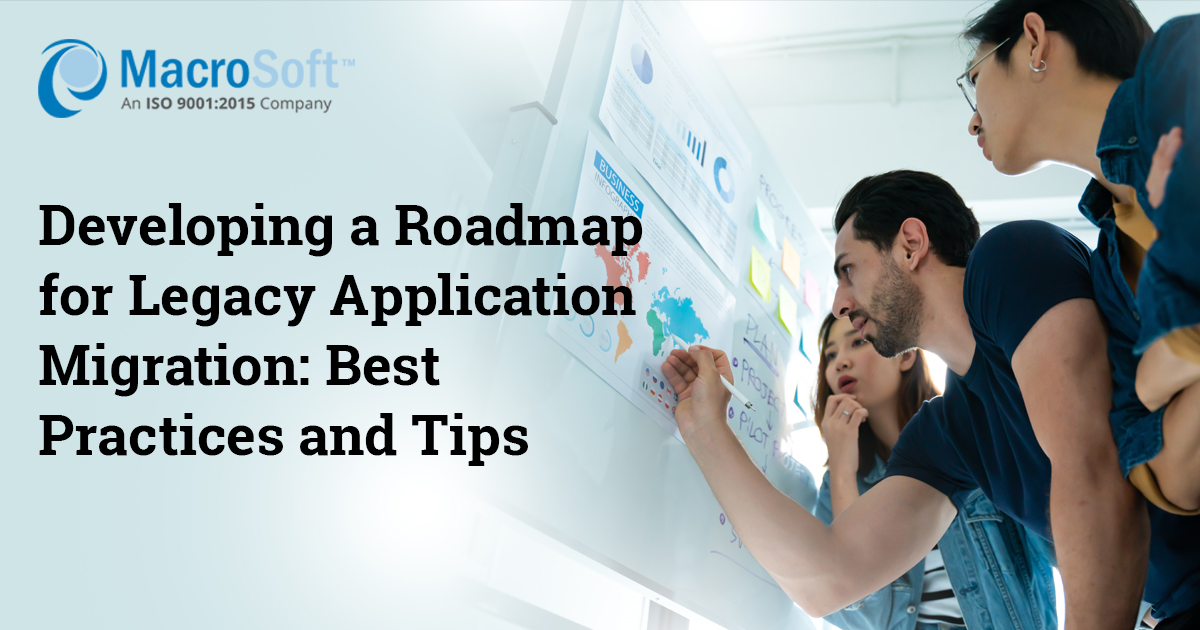
By Nandha Kumar | Published on August 22nd, 2023 | Last updated on May 19th, 2025 |
Legacy modernization is a critical journey for organizations aiming to optimize their IT infrastructure and unlock new business value. As companies evolve, the need to modernize the application landscape becomes paramount to sustain competitiveness and agility. This blog elaborates on developing a comprehensive roadmap for legacy application migration, focusing on essential strategies such as application modernization, mainframe modernization, and meticulous data migration plans.
Modernizing the application environment is not merely about upgrading software. It involves transforming legacy systems to leverage current technologies that enhance performance, scalability, and maintainability. Legacy systems, often built on outdated mainframes or older platforms, can impede innovation due to their limited capabilities and integration challenges. Hence, application modernization becomes a strategic imperative, enabling businesses to adapt to changing market demands and technology landscapes.
A successful legacy modernization initiative starts with clearly defining the goals. Organizations must understand why the migration is necessary—whether it’s to improve system performance, reduce operational costs, enhance security, or enable new functionalities. These objectives direct the modernization approach and prioritize efforts across applications.
Before moving forward, it’s crucial to assess the current state of legacy applications. This evaluation covers architecture, dependencies, integration points, and performance bottlenecks. Special attention is given to mainframe modernization, as mainframes often hold mission-critical workloads but present unique complexities. The assessment helps identify risks and challenges, ensuring a smoother migration journey.
Not all applications require simultaneous migration. Prioritization based on business criticality, technical complexity, and resource availability allows a phased approach. This staged migration reduces disruption and focuses modernization efforts where they add the most value.
Data migration is a cornerstone of legacy modernization. It involves extracting data from legacy systems, transforming it for compatibility with modern platforms, and loading it securely into new environments. Detailed data migration plans minimize risks such as data loss or corruption, ensuring business continuity.
Legacy modernization can follow multiple strategies:
Selecting the appropriate strategy depends on the application’s complexity, business goals, and budget.
Post-migration, rigorous testing validates that the modernized applications meet functional and performance expectations. User acceptance testing confirms usability and alignment with business needs, ensuring a successful transition.
Mainframe modernization is a specialized aspect of legacy modernization. Many enterprises still rely on mainframes for core processes, but these systems can be costly and inflexible. Modernization efforts may include migrating workloads to cloud platforms, refactoring legacy code, or integrating with modern APIs to enhance agility and reduce operational costs.
Legacy modernization is a transformative journey that requires strategic planning, careful execution, and thorough validation. By developing a detailed roadmap that includes comprehensive data migration plans and selecting appropriate modernization strategies, organizations can successfully revitalize their application landscape. Embracing application modernization and mainframe modernization not only improves operational efficiency but also positions businesses for future growth and innovation.
Contact us today to modernize your legacy applications and unlock enhanced agility, performance, and competitive advantage in tomorrow’s digital economy.